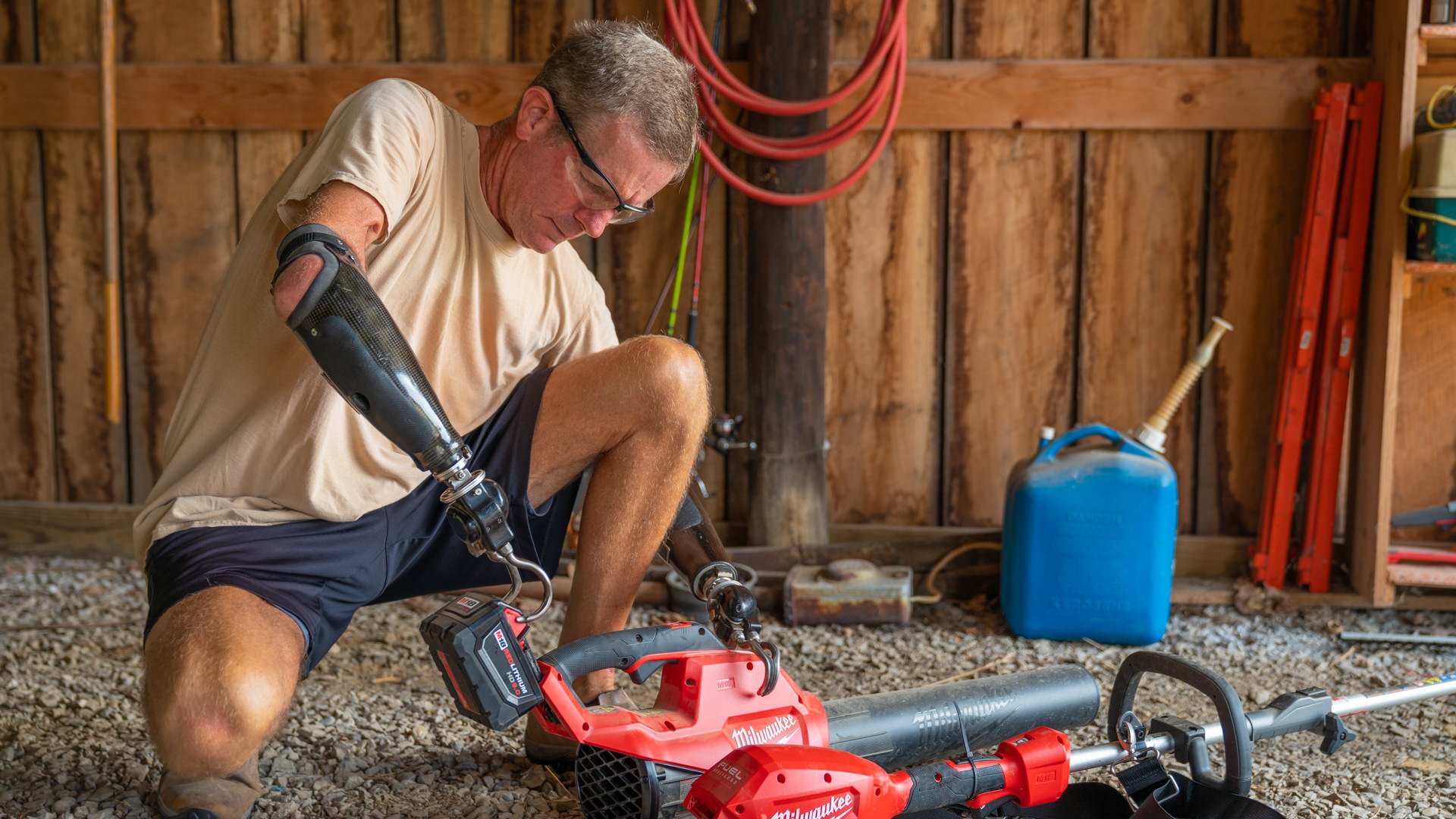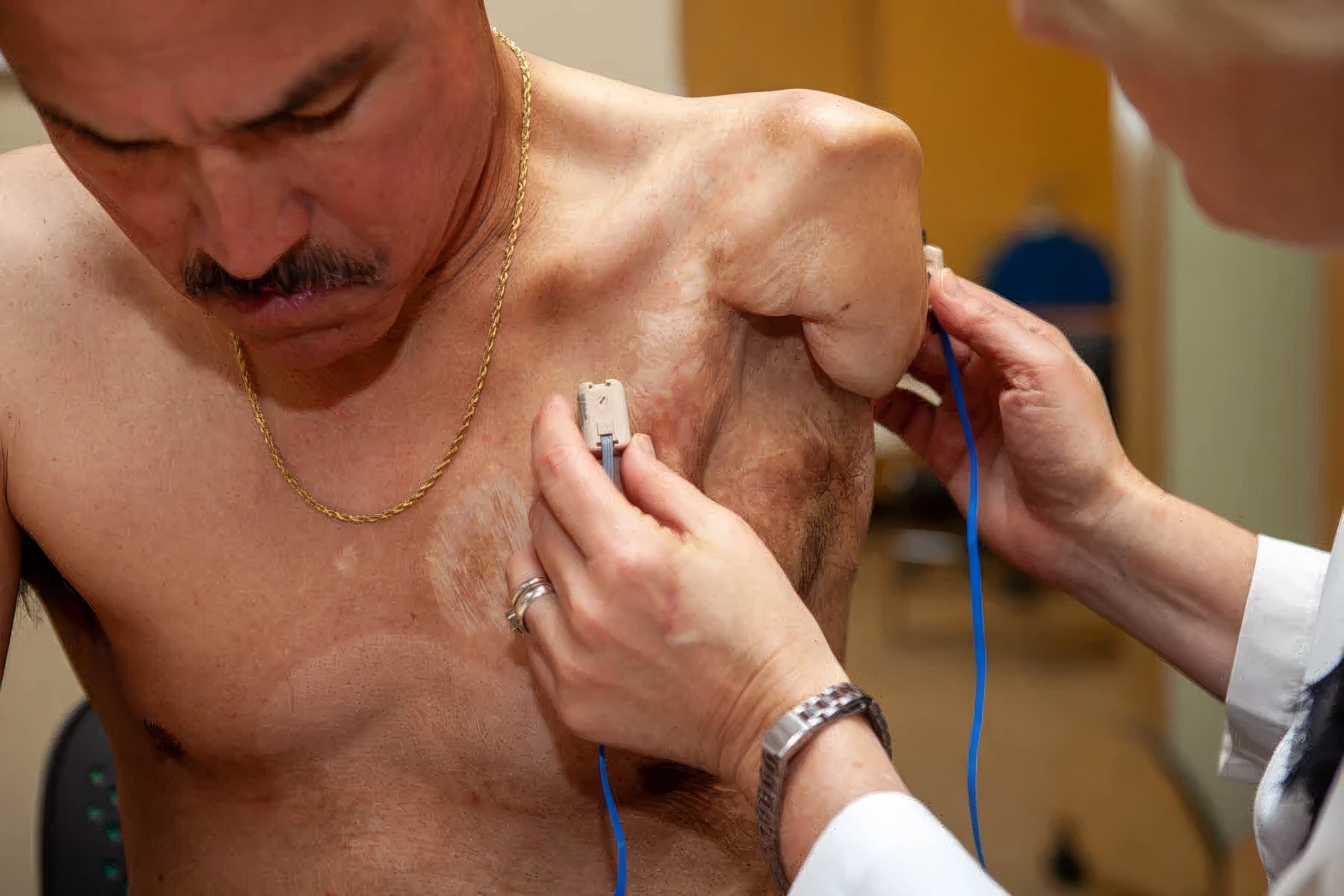After experiencing an amputation, many people would prefer to never be back on the operating table again. That is understandable. But there are benefits to receiving second, third, or even further surgeries after an amputation. These surgeries are referred to as “revision” surgeries. At our Arm Dynamics centers, we welcome our patients to involve us in conversations about any surgery they are considering — and we encourage our patients to partner with us and their surgeon in a pre-surgical consultation.
Pain management, including neuromas
After an amputation, there can be residual limb pain, phantom limb pain, and the patient can experience neuromas. All of these can interfere with the patient’s quality of life and their ability to return to work. While Graded Motor Imagery, or other non-invasive pain management techniques, can help with some of these pain issues, another option is a surgery called Targeted Muscle Reinnervation, or TMR. During a TMR procedure, the surgeon works with available nerves — the nerves that, before amputation, fired the muscles and activated movement of the limb. Those nerves are reassigned to the remaining muscles in the residual limb. If TMR is done in conjunction with the initial amputation surgery, it can prevent neuromas from occurring.
Better control of a prosthesis
TMR can also allow for better prosthetic control. Once the nerves are reassigned to the remaining muscles, the prosthetist can program movements into the prosthetic device and allow the user to have more intuitive use of their device. You can learn more about TMR in this video of our patient Kate Jorgenson, who had TMR surgery when she was 14 (Kate pictured below).
Fixing various issues
There are some common issues that can arise after an amputation. One of these is needing to shorten the limb so the wearer can better use a prosthetic device. For instance, sometimes a residual limb is left long with the hope of future treatment such as hand transplantation. Or the hope is that the person will benefit from the additional length. This can lead to a limb that is too long to work with some prosthetic components and result in a prosthesis that is not functional because of the added length. In this case, revision surgery that shortens the limb may be beneficial. This can also happen when people have congenital limb difference. Some patients’ arms “pencil” over the years, becoming very thin at the end of their residual limb, causing pain and making it difficult to fit a prosthesis. Revision surgery can help with that as well. Sometimes there will be excessive tissue at the end of the limb that makes fitting the socket very challenging and can lead to loss of control of the limb. In this case, a revision to remove some of the excess tissue may help. Our patient Gerry (pictured below) had revision surgery on his residual limb to allow for a better prosthesis fit — the length of his limb meant the prosthesis was putting too much weight on a sensitive part of his arm.
Future benefit
Osseointegration is a surgery where a titanium implant is inserted into the bone of the residual limb. While not widely used for upper limb amputations in the United States, this is an option that some people with amputations pursue. In addition, there is a unique surgery for finger amputees, the Starfish Procedure, that can allow for individual finger control with a myoelectric device. Currently, there are no prosthetic devices that are approved to be used in conjunction with the Starfish Procedure, but it’s exciting to know that there are surgeons, healthcare professionals and patients out there pushing the limits.
No matter why an upper limb amputee might be considering revision surgery, we are here to walk our patients through their decision. We have years of experience with patients who have chosen, or not chosen, to have further surgeries, and we can tell you what did and did not work for them. We can also connect our new patients with with people in our Peer Support Network. Feel free to contact us. Or if you have experience with limb revision surgery, we would love for you to comment below.







%20President%20and%20Senior%20Clinical%20Director.jpg?width=600&height=600&name=John%20M.%20Miguelez%2c%20CP%2c%20FAAOP(D)%20President%20and%20Senior%20Clinical%20Director.jpg)










No Comments Yet
Let us know what you think